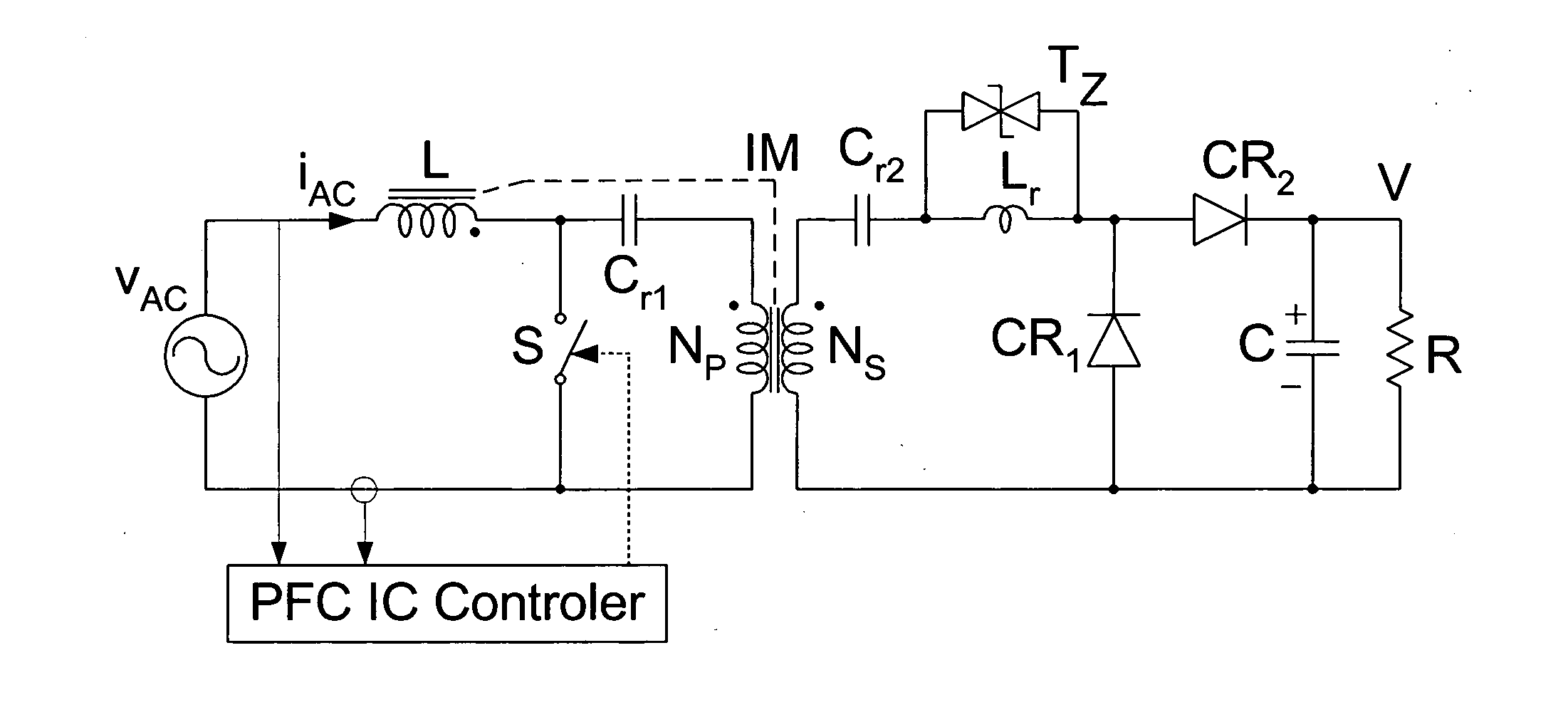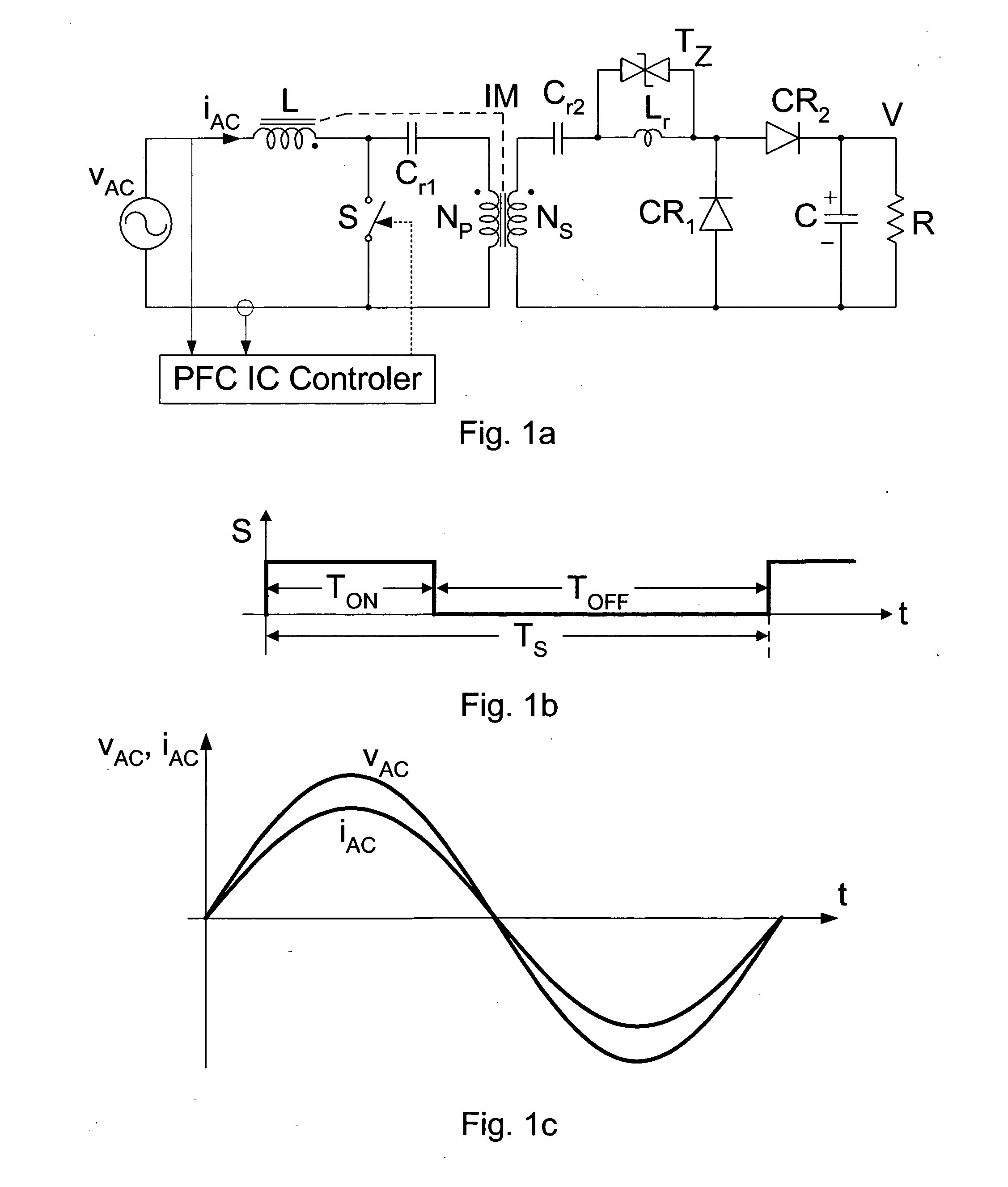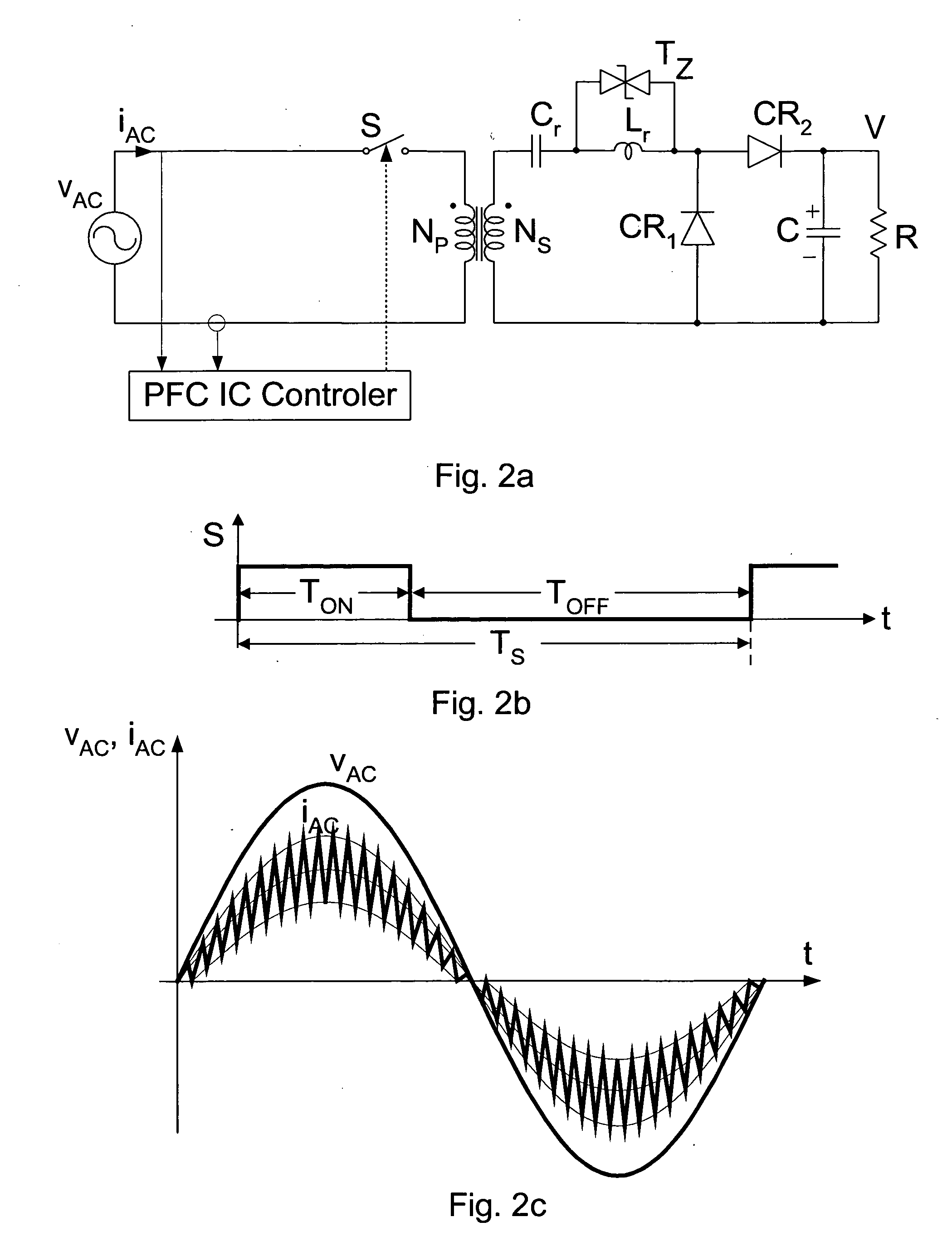Single-stage AC-to-DC converter with isolation and power factor correction
a single-stage ac-to-dc converter and isolation technology, applied in the field of acdc conversion, can solve the problems of low efficiency, large size and weight, high cost, etc., and achieve the effect of reducing size, reducing cost and increasing efficiency simultaneously
- Summary
- Abstract
- Description
- Claims
- Application Information
AI Technical Summary
Benefits of technology
Problems solved by technology
Method used
Image
Examples
##s embodiment
Integrated Magnetics Embodiment
The voltage waveforms of the inductor L and transformer T in the converter of FIG. 1a are identical as seen in FIG. 39a. This then makes it possible to integrate the inductor and transformer on the common core to result in the integrated magnetics (IM) structure of FIG. 39b which in turn, by judicious design of the magnetics, will result in the removal of the input ripple current, or actually its shift into the transformer windings so that the high frequency ripple current is eliminated and the need for separate high frequency filter is also eliminated. Yet the smooth noise free input current of FIG. 1c is obtained.
Shown in FIG. 40a-c is the case of another possible modulation strategy, that is constant OFF-time and variable ON time modulation.
Converter Start-up
The DC gain characteristic of (4) suggests that the isolated converter would have the start-up problem as the DC gain characteristic is always greater than 1. Yet at start-up the output DC volta...
experimental verifications
The Single-Stage AC-DC Converter with Isolation and Power factor Correction (PFC) performance features is verified by on an experimental 400 W prototype, which converts 110V AC line voltage and 220V AC line voltage into a 400V isolated output voltage with very high efficiency over the wide range. FIG. 42a shows the efficiency measurements at a 300 W level over the wide input AC voltage range from 85V AC to 240V AC and FIG. 42b shows the corresponding FIG. 43a shows the line voltage (top trace) and AC line current (bottom trace). The Power factor was measured at 300 W load to be 0.999. loss measurements.
Very high efficiency of over 97% was measured over the wide input AC voltage. In particular note the very high efficiency at the low AC line voltage of 85VAC as shown in FIG. 42a while the low total losses are shown in FIG. 42bb. This clearly indicates the absence of the bridge rectifier on the front. The prior-art PFC converters have a significant efficiency drop at the low 85V AC li...
PUM
 Login to View More
Login to View More Abstract
Description
Claims
Application Information
 Login to View More
Login to View More - R&D
- Intellectual Property
- Life Sciences
- Materials
- Tech Scout
- Unparalleled Data Quality
- Higher Quality Content
- 60% Fewer Hallucinations
Browse by: Latest US Patents, China's latest patents, Technical Efficacy Thesaurus, Application Domain, Technology Topic, Popular Technical Reports.
© 2025 PatSnap. All rights reserved.Legal|Privacy policy|Modern Slavery Act Transparency Statement|Sitemap|About US| Contact US: help@patsnap.com



